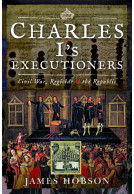The Art of Combat (Paperback)
A German Martial Arts Treatise of 1570

Pages: 320
Illustrations: 200 black and white illustrations
ISBN: 9781526771100
Published: 8th January 2021
Expected Re-release Date: 30th May 2025
(click here for international delivery rates)
Order within the next 5 hours, 42 minutes to get your order processed the next working day!
Need a currency converter? Check XE.com for live rates
First published in 1570, Joachim Meyer’s The Art of Combat is among the most important texts in the rich corpus of German martial arts treatises of the Middle Ages and Renaissance.
Meyer is unique in offering full recommendations on how to train for various weapons forms. He divides his book into five parts by weapon types: longsword; dusack (a practice weapon analogous to a sabre); rapier; dagger; and staff weapons. For each weapon, Meyer lays out the principles of its use and the vocabulary of techniques, and then describes a range of specific ‘devices’, attack combinations for use in combat. This rational approach, along with Meyer’s famous and profuse woodcut illustrations, make this a crucial source for understanding the history and techniques of medieval and Renaissance martial arts.
In the first ever English translation of this important work, Jeffrey Forgeng has sought to improve accessibility of the text. His Introduction is the first substantial account to be published in English of the German Fechtbuch corpus, and the Glossary likewise is the first of its kind to be published in English.
Overall, I liked this a lot. This is good for anyone interested in historical warfare, martial arts, German history, or cultural changes in weapon use. This is written at a time when martial arts are waning in favour of guns. Meyer was trying to preserve and promote what Meyer described as “the knightly and noble art of combat”. You can tell throughout this book how proud and honourable he felt his craft was and this book is the result of such a passion.
Reviewed by Michelle McMenamin on Goodreads
Click here to read the full review
This classic treatise of armed combat stands the test of time, provides insight into Sixteenth Century combat and includes substantial introduction, with a detailed glossary of technical terms. Fascinating and highly recommended.
Firetrench
Read the full review here.
Experts agree that it is one of the best existing treaties in relation to the German medieval martial arts, written with a vocation intention to expose techniques for their teaching.
José Manuél Rico Cortés (Mister JM) - Miniaturas JM
A curious and interesting book.
Read the full Spanish review here.
If you’re interested in how people actually fought in the Early Modern Age, or just want to be able to visualize the duel between Romeo and Tybalt, The Art of Sword Combat is a book that will tell you everything you need to know.
Medievalists.net
A fascination, too little-known, and vividly illustrated volume, Meyer's Art of Combat is especially remarkable in its attention to fighting with halberds, pikes, and quarterstaffs. Military and cultural historians as well as those interested in stage combat will find it invaluable
Professor James Shapiro
A very good presentation of Meyers work. I highly recommend to anyone looking to study renaissance combat.
Geoffrey Colon, Amazon Reviewer
This very interesting contemporary renaissance martial arts book shows a step in the development of medieval fighting arts to fighting for sport. Only the section on the (cut and thrust) rapier is intended for 'serious' fighting. The longsword, dussack and halberd, knife and pike sections are for 'sparring for sport'. As such it is a very interesting book which demonstrates George Silver's statement that fight school masters teach no thrust and rapier school masters teach no cut.
M. Matthys, Amazon Reviewer
As modern Western Martial Arts enthusiasts fight for sport and not in a life and death situation it may be thought that this style of fighting would suit them well. On the other hand they may feel that the lack of thrusting in the longsword section (the main section) leaves a gap which is better filled by the medieval manuals which exist.
I am not aware of any other contemporary manuals that deal with the dussack and this section is especially valuable for that reason.
On the whole a very interesting book which shows how the medieval style of fighting was changing into a sport during the later 16th century.
About Joachim Meyer
Joachim Meyer was born in Basel in Switzerland in approximately 1537, possibly the son of Jacob Meyer, a stationer, and Anna Freund. He became a burgher of Strasbourg by marrying a widow in 1560, most likely during his apprenticeship as a cutler. He made a living as both a cutler and a professional fencer until 1570, in which year he published his Art of Combat – the book that made him famous. The making of this book, however, left him deeply indebted, and the search for potential buyers led him to leave Strasbourg and work as a Master-of-Arms at the court of the Duke of Schwerin. Unfortunately, he died shortly after his arrival, on 24 February 1571, at the age of just thirty-four, leaving the burden of his debt to his widow and brother-in-law.
















